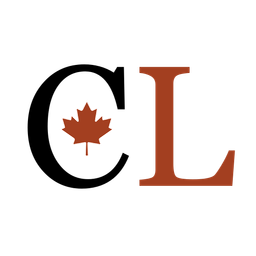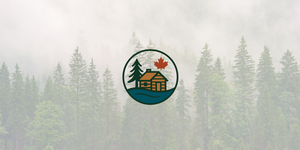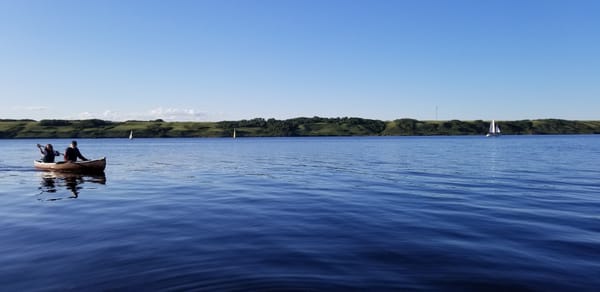Every summer, as Saskatchewanians flock to the province's many lakes, a team of water quality experts is hard at work behind the scenes. From June through August, they're collecting water samples from beaches around the province, searching for invisible threats that could turn your perfect lake day into a trip to the Emergency Department.
But what exactly are they looking for?

E. coli and Blue-Green Algae
Saskatchewan's Healthy Beaches Program focuses on two primary threats to swimmer safety: E. coli bacteria and microcystin, which is a toxin produced by blue-green algae.
Both are dangerous, and both are invisible to the naked eye.
Fecal Contamination

While most strains of E. coli are harmless, their presence in water indicates fecal contamination - which is a red flag that other dangerous pathogens might be present, too.
This might be from storm water runoff carrying animal waste, aging septic systems and leaky sewage tanks, farm manure runoff, wildlife or even pet waste. In beach sand, bacteria can thrive and wash into the water.
Exposure to contaminated water can cause stomach upset, skin rashes, sore throats, and eye or ear infections. In severe cases, certain strains can lead to bloody diarrhea or kidney failure, particularly in young children, the elderly, and those with weakened immune systems.
Toxic Bloom

Despite its name, blue-green algae (cyanobacteria) isn't actually algae at all - it's a type of bacteria that can produce dangerous toxins. During hot, sunny weather, these organisms can multiply rapidly in calm, nutrient-rich water, creating visible blooms that look like pea soup, green paint, or surface scum.
The health risks are serious. Contact with blue-green algae can cause skin and eye irritation, allergic reactions and rashes, nausea, vomiting, and diarrhea if water is swallowed. Severe illness in pets and livestock (who can't recognize the danger) is also possible.
Perhaps most concerning: boiling contaminated water doesn't help. In fact, it can make things worse by rupturing the "algae" cells and releasing more toxins into the water.
How Testing in Saskatchewan Works

The Healthy Beaches Program doesn't test every public beach, every year. It follows Canadian Recreational Water Quality Guidelines, prioritizing beaches based on high public use, historical water quality concerns and designation as public swimming areas.
Since the program began in 2012, all known public beaches under the province's jurisdiction have been tested.
Samples are collected weekly or biweekly throughout the summer swimming season. When results show unacceptable levels of E. coli or microcystin, public health officials post swimming advisories at multiple locations around the affected beach.
2025 Water Quality Results for Saskatchewan Lakes
Testing has already been performed at a number of lakes this year, and fortunately all lakes are within safe limits so far.
Saskatchewan Beach Water Quality
2025 Healthy Beaches Program test results for E. coli and microcystin levels

| Safe | Beach Location | Test Date | Sample Results |
|---|---|---|---|
| — | Alice Beach | — | No data available |
| — | Annie Laurie Beach | — | No data available |
| ✓ | Aspen Grove Beach | June 23, 2025 | E. coli = 1.32/100mL (4 samples) Microcystin <0.1 μg/L |
| — | Barrier Ford Beach | — | No data available |
| ✓ | Battlefords Provincial Park | June 24, 2025 | E. coli = 1.64/100mL Microcystin <0.1 μg/L |
| ✓ | Bells Beach | June 24, 2025 | E. coli = 3.73/100mL Microcystin <0.1 μg/L |
| — | Brightsand Lake Regional Park | — | No data available |
| ✓ | Buffalo Pound Provincial Park | June 23, 2025 | E. coli = 16.32/100mL Microcystin = 2.5 μg/L |
| ✓ | Clearwater Lake Regional Park | June 23, 2025 | E. coli = 18.86/100mL Microcystin <0.1 μg/L |
| — | Cypress Hills Interprovincial Park West | — | No data available |
| — | Dallas Valley Ranch Camp | — | No data available |
| ✓ | Danielson Visitor's Center | June 24, 2025 | E. coli = 5.33/100mL Microcystin <0.1 μg/L |
| ✓ | Echo Provincial Park | June 24, 2025 | E. coli = 1.52/100mL Microcystin <0.1 μg/L |
| — | Etter's Beach | — | No data available |
| — | Good Spirit Lake Provincial Park | — | No data available |
| ✓ | Greenwater Beach | June 24, 2025 | E. coli = 1.55/100mL Microcystin <0.1 μg/L |
| ✓ | Katepwa Beach | June 24, 2025 | E. coli = 1.32/100mL Microcystin <0.1 μg/L |
| — | Kedleston Beach | — | No data available |
| ✓ | Kevin Misfeldt Beach Area | June 23, 2025 | E. coli = 6.28/100mL Microcystin <0.1 μg/L |
| — | Kipasbiskau Regional Park | — | No data available |
| ✓ | Kimball Lake Campground | June 24, 2025 | E. coli = 1/100mL Microcystin <0.1 μg/L |
Beaches tested
21
Currently safe
12
Testing period
Jun–Aug
✓ = Safe for swimming | — = Not yet tested | Safe levels: E. coli <200/100mL, Microcystin <20 μg/L
Source: Saskatchewan Healthy Beaches Program

What About Swimmer's Itch?
While not part of routine testing, Swimmer's Itch is another common concern for Saskatchewan lake-goers. This irritating rash is actually caused by parasitic flatworms that normally infect birds and snails. When these parasites encounter human skin instead of their intended hosts, they cause temporary but uncomfortable symptoms including tingling, burning, small red pimples, and blisters.
Prevention is your best defense:
- Avoid shallow, weedy areas where parasites congregate
- Towel off immediately after swimming
- Take a cleansing shower as soon as possible
- Don't feed birds at the beach (they're part of the parasite's life cycle)
When Advisories Are Posted

A swimming advisory doesn't mean the beach is closed - it means the water isn't safe for swimming. You can still enjoy the beach for picnics, sunbathing, or beach volleyball, but keep kids and pets away from the water.
A few things to note about advisories:
- They apply only to the specific beach area tested, not necessarily the entire lake
- Boating and sailing away from advisory areas are usually fine
- If you see advisory signs at the beach but not online, trust the beach signs, as they're the most current
- Advisories remain until follow-up testing confirms water quality has improved
Protecting Yourself and Your Family
Whether or not an advisory is posted, use common sense.

- Avoid water that looks discolored or has visible algae blooms
- Rinse off with clean water after swimming
- Wash swimwear and water gear after use
- Keep cuts and wounds out of lake water
- Supervise children and pets closely
- Never drink untreated lake water
If you've been exposed to contaminated water and experience symptoms, seek medical attention promptly.
Enjoy the Lake

Saskatchewan's Healthy Beaches Program helps keep lakes safe for the thousands of people who enjoy the province's many bodies of water each summer.
Not finding your favorite beach on the testing list doesn't mean it's unsafe - it might simply mean it hasn't been selected for routine monitoring. Private beaches aren't included in the program, and some public beaches are only tested on a complaint basis.
We'll update the table above throughout the season with new results. When in doubt, contact a Public Health Inspector with the Saskatchewan Health Authority for guidance.
After all, the best lake days are the safe ones, where the only thing you take home are happy memories.






Join the Conversation